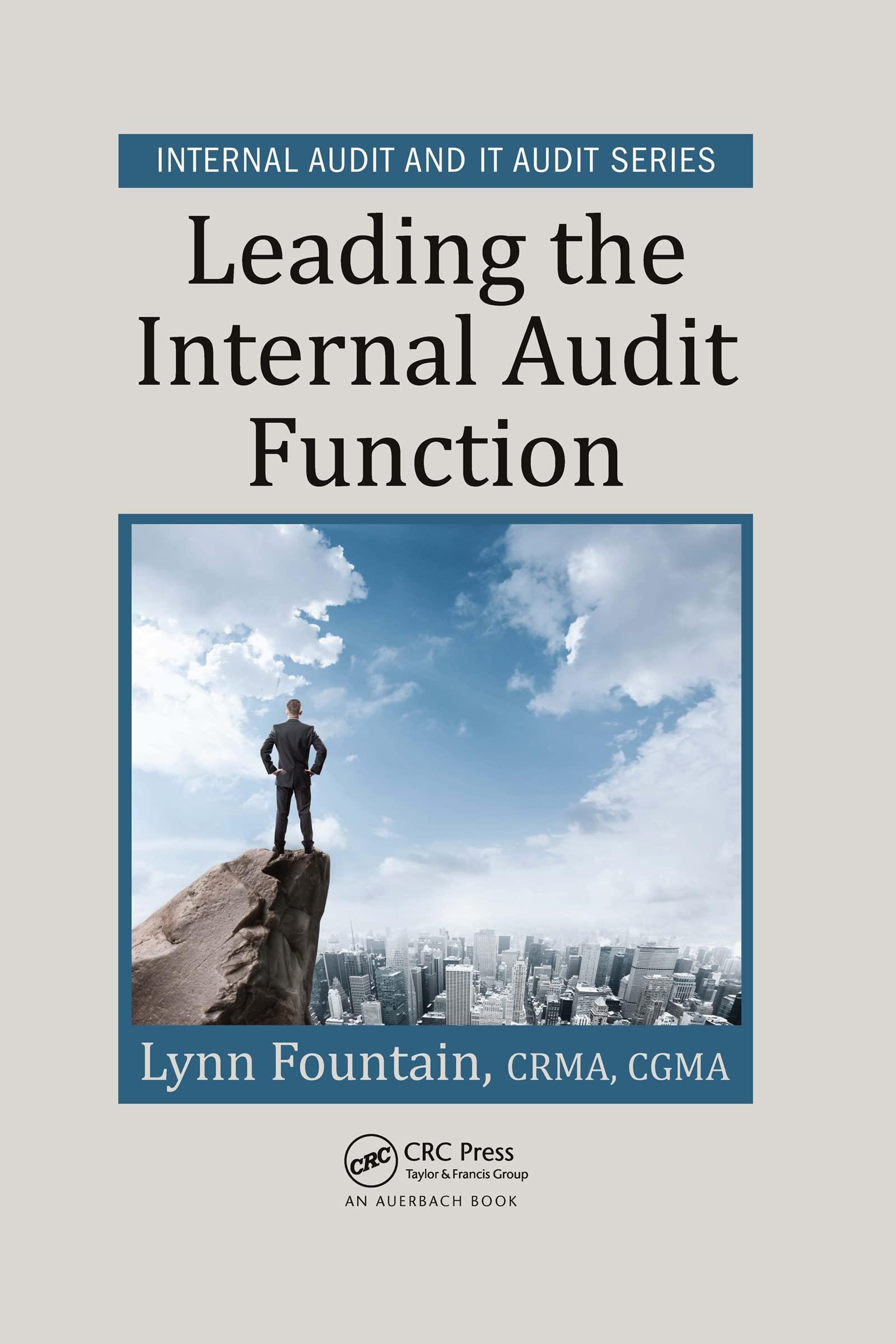Question
Business Law II NO COPY CH. 43: Q08 8. Emmick was a director and shareholder of Colonial Manors, Inc. (CM). He organized another corporation named
Business Law II
NO COPY
CH. 43: Q08
8. Emmick was a director and shareholder of Colonial Manors, Inc. (CM). He organized
another corporation named Oahe Enterprises, Inc. To obtain shares of the Oahe
stock, Emmick transferred CM shares arbitrarily valued by him at $19 per share to
Oahe. The CM shares had a book value of $.47 per share, but Emmick believed that
the stock would increase to a value of $19. The directors of Oahe approved Emmick's
payment with the valuation of $19 per share. Golden sued Emmick on the ground
that he had fraudulently deceived Oahe Corp. about the value of the CM shares and
thus had made a secret profit when he received the Oahe shares that had a much
greater value than the CM shares he gave in exchange. Emmick contended that his
firm opinion was that the future potential value of CM shares would surely reach
$19 per share. Decide. [Golden v. Oahe Enterprises, Inc., 295 N.W.2d 160 (S.D.)]
CH. 43: Q10
10. The Seabrook Island Property Owners Association, Inc., is a nonprofit corporation
organized under state law to maintain streets and open spaces owned by property
owners of Seabrook Island. Seabrook Island Co. is the developer of Seabrook Island
and has majority control of the board of directors of the association. The
association's bylaws empower the board of directors to levy an annual maintenance
charge. Neither the association's charter nor its bylaws authorize the board to assess
any other charges. When the board levied, in addition to the annual maintenance
charge, an emergency budget assessment on all members to rebuild certain bridges
and to revitalize the beach, the Loverings and other property owners challenged in
court the association's power to impose the assessment. Decide. [Lovering v.
Seabrook Island Property Owners Ass'n, 344 S.E.2d 862 (S.C. App.)]
CH. 43: Q06
6. Richard Ramlall was hired by CloseCall (MD) Inc. to negotiate a billing dispute with
Verizon involving some $2 million in asserted overcharges. CloseCall (MD) agreed to
a contingent fee "bonus" for its negotiators of 10 percent ofthe refund. The
negotiations were successful. However, before he could collect his fee CloseCall (MD)
merged with MVCC Acquisition Corp., a wholly owned subsidiary of MobilePro Corp.,
which was created for the express purpose of merging with CloseCall (MD). MVCC
survived and CloseCall (MD) dissolved. MVCC then changed its name to CloseCall
(DE). The merger agreement between CloseCall and MVCC referenced the 10 percent
bonus due on the Verizon billing dispute. The surviving Delaware corporation
created by the merger of CloseCall (MD) into MVCC is CloseCall (DE). Ramlall sued
CloseCall (DE) for the bonus as the successor corporation of CloseCall (MD). CloseCall
(DE) contends that after the merger CloseCall (DE) did not owe any money to Ramlall.
Is CloseCall (DE) a successor corporation? Is it liable to Ramlall for the "bonus fee"?
[Ramlall v. Mobile Pro Corp., 30 A.2d 1003 (Md. App.)]
Step by Step Solution
There are 3 Steps involved in it
Step: 1

Get Instant Access to Expert-Tailored Solutions
See step-by-step solutions with expert insights and AI powered tools for academic success
Step: 2

Step: 3

Ace Your Homework with AI
Get the answers you need in no time with our AI-driven, step-by-step assistance
Get Started


